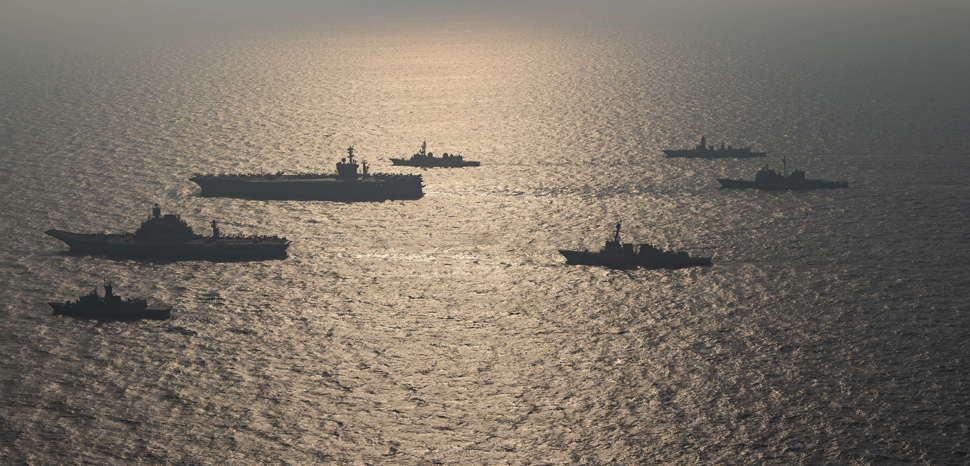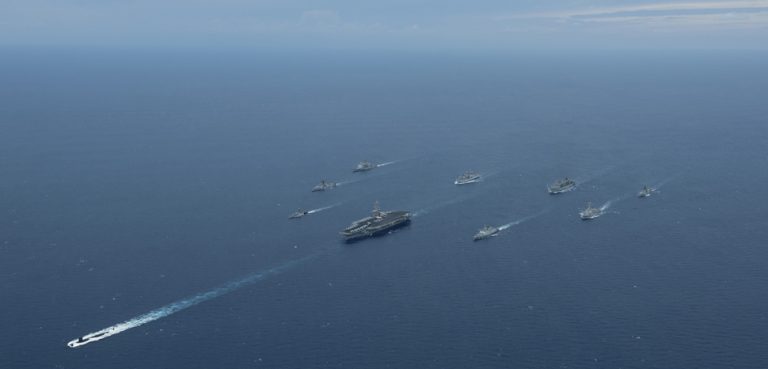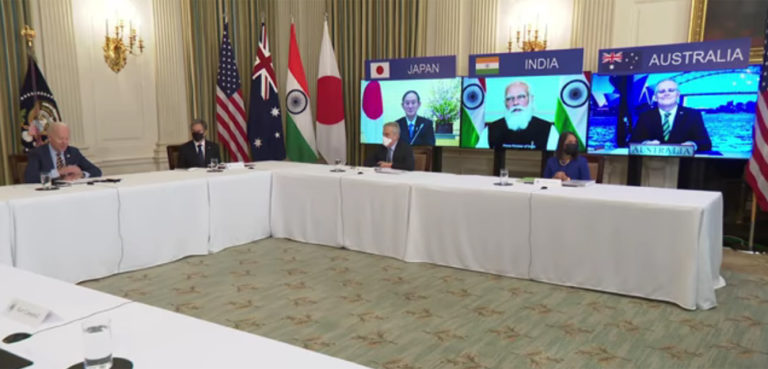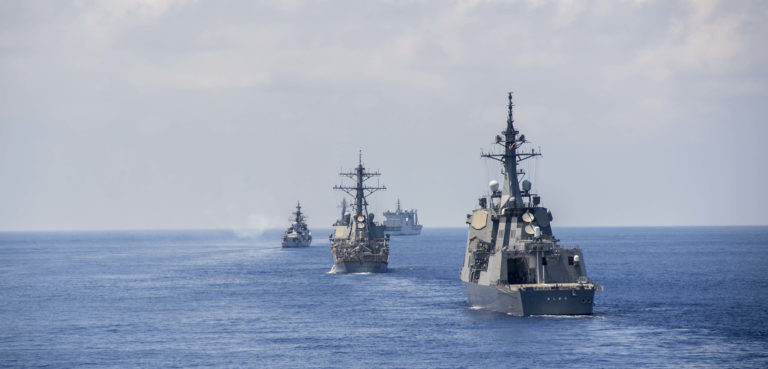Japan is a key security-oriented actor in the regional and global domains and has played a rather influential role across the entire seaboard of the Asian continent. As an avowed promoter of a free and open Indo-Pacific strategy (F&OIP), Japan is poised to encompass the maritime domain not just because it is a maritime nation but because its presence, by its leaders too, is desired in oft-ignored sea areas such as the Indian Ocean. As far as the Indian Ocean is concerned, it forms one half of the now prominent and predominant Indo-Pacific region (IPR), which is an amalgamation of the Indian Ocean and the western Pacific Ocean. The latter finds itself at the center of Japan’s broad range of mutually-accommodative interests in the maritime domain.
As far as Japan’s Indian Ocean strategy is concerned, a more focal outlook on Indian Ocean countries as opposed to the vast expanse of the Indian Ocean region (IOR) is desired. India, for example, exports refined petroleum and other non-renewable energy commodities as products (mineral fuels, oil distillates, petroleum products) to Japan. This creates a unique energy situation for Tokyo in that it is not just looking at faraway Middle East (a source of close to 90% of its fuel imports) but relatively nearby South Asia to meet its growing energy needs.
A strategy for the world’s third largest ocean will most certainly include several aspects of Japan’s Indo-Pacific vision, strategy, and principles. The Indian Ocean, however, should be viewed, by Japan, from a limited geography featuring South Asia and resident Indian Ocean island-countries such as Mauritius and the Maldives. This would add a historically-absent exclusivity to Japan’s innumerable geo-economic interests in South Asia.
The China Challenge
Japan remains strongly inclined to realize the importance of a comprehensive presence in the Indian Ocean and the need to urgently add a security dimension to several of its softer initiatives. Japan-funded port networks and spruced-up zonal connectivity in the Bay of Bengal (for example), development-funding of the Andaman and Nicobar Islands of India, and joint Indo-Japanese ventures in water-locked Sri Lanka have formed the basis of Tokyo’s economically-measured presence in the Indian Ocean.
Moreover, the Indian Ocean is home to the critical sea lines of communication that are responsible for the transport of vast numbers of Japan’s fossil fuel-based energy procurement from the oil-rich Arabian Gulf region. To what extent this transit remains safe and secure remains an open question and is one that has extracted its toll on Japanese policymakers. The waters near India themselves have been vulnerable to instances of maritime terrorism (MV Alondra Rainbow incident, 1999) and other non-traditional security threats such as smuggling and trafficking.
The above being noted, the Indian Ocean may not be an easy place for Japan to consolidate its maritime resources and rapidly set up shop. The Peoples’ Republic of China (PRC, China) will be much tempted to increase its naval capacities, realize its blue-water prowess, and devote its maritime capabilities better to the Indian Ocean. Beijing has already invested considerable time and resources to establish its presence in the Bay of Bengal. This could inadvertently result from Japan’s extra-regional maritime revolution i.e., a long-term stay in the Indian Ocean. The recent statements within Japan regarding the potential hosting of American nuclear weapons in the Japanese main islands even keeps Tokyo open to military nuclearism.
This would result from Beijing’s realization of newfound Japanese geostrategic interests (especially, security-related matters) in the Indian Ocean. Japan is, thus, presented with a unique dilemma that condemns the country’s long-held aspirations of elevating itself to regional security responsibility to even more fraught and delay. The pending reform of Article Nine (Constitution of Japan, May 1947) also continues to restrict unilateral Japanese militarism and ensures that it remains a non-conforming security actor, except where Tokyo’s immediate geography and survival is concerned.
Conclusion: Japan versus China in the Indian Ocean
The event of a serious Japanese naval presence (tantamount to, say, a sizeable Japanese naval basing in the Indian Ocean, aka Djibouti) in the Indian Ocean in itself will trigger the much-dreaded classic security dilemma. Since the Indian Ocean is closer home to both Japan and China, it is highly likely that the approach by the two nations here will be far different from the western Indian Ocean region. The Indian Ocean could, hence, emerge as a zone of stifling and prolonged conflict between some of the major powers of the world (such as Japan and China) as they strive to broaden the scope and strengths of their existence.
China-focused minilateralism is being spearheaded by the navies of the United States of America, Japan, India, and Australia, which constitute the Indo-Pacific-inclined Quadrilateral Security Dialogue (QUAD). This has also centered upon the Indian Ocean with the four QUAD countries conducting the unofficial MALABAR in New Delhi’s maritime zones of influence. For Tokyo, an Indian Ocean strategy is not just imminent but is also being trailed by a pressing security dilemma and is accompanied by a number of strategic challenges. These, in essence, will require judicious policymaking from its leadership.




